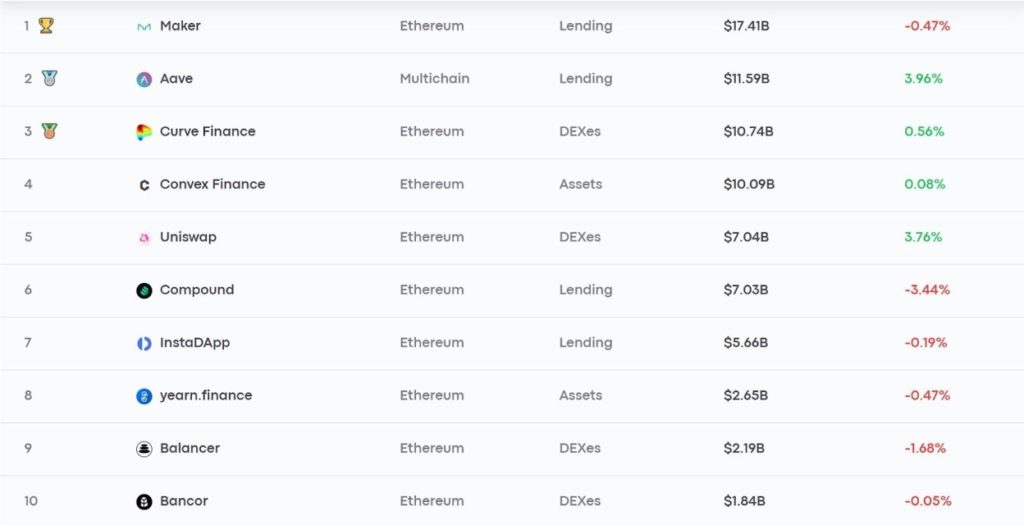Crypto-backed lending has already become a major hit in the market - there's no doubt about that fact. It offers a way for people and businesses that need money to easily get their hands on funds, and it can be a reliable source of passive income for investors as well.
Today, protocols in both the centralized and decentralized crypto space offer access to loans. Decentralized finance (DeFi) is especially booming - according to the latest rankings from DeFi Pulse, 4 of the top 10 DeFi protocols focus primarily on lending.

The growth of crypto-backed lending has been due to several factors, which we'll get into later. However, while this space focuses on helping people and businesses gain access to funds more easily, it is also taking away customers from another massive industry - the traditional finance space.
Traditional Lending Remains a Behemoth
Lending and credit are two important financial concepts that gave rise to the global economy as we know it. When the Industrial Revolution came along, and companies began to spring forth, they were only able to do it because of big traditional institutions that lent them massive sums. The same happened in the late 20th century when economies started to explode, and international collaboration became the order of the day.
Now, we're seeing another explosion in economic opportunity, and lending is at the heart of it once more. Recently, the Lending Global Market Report 2022 from The Business Research Company showed that the traditional lending market is expected to grow from $7.07 trillion in 2021 to $7.8 trillion in 2022 at a compound annual growth rate (CAGR) of 10.8%. Even more, the market is expected to hit a value of $11.28 trillion in 2026 at a CAGR of 9.5%.
To put all of this in perspective, the global lending market alone is worth more than three times the size of the crypto market. That's no mean feat.
With lending becoming a behemoth of an industry, banks have been able to benefit immensely as well. As of 2019, JPMorgan was the only big bank in the United States that had an even split in revenues between net interest income and total non-interest income. The bank's financial report for the year showed a net interest income of $57 billion and a non-interest income of $58 billion.
Everyone else earned more from the loans they gave out, showing that lending is beyond critical to these banks if they hope to maintain profitability. For the year, Citigroup was the bank with the biggest exposure to interest rate risks, with a non-interest income of just $27 billion compared to $47 billion in net interest income - according to its annual report.
It goes without saying that big banks need people and companies to lend to. They drive billions annually from the interest they get on these loans, and their ability to maintain this growth will rely significantly on their ability to give out more loans.
What Makes Crypto-Backed Lending So Great?
While big banks are raking in billions in interest, many of them have been wary of the growing crypto threat. Some - like JPMorgan - have even tried to get into the crypto and blockchain space with products and offerings of their own.
But, it is worth looking at why many businesses are leaving traditional lending and making the switch to crypto. What exactly makes crypto-backed lending so alluring?
Favorable interest rates
One of the biggest benefits of crypto lending platforms is that their interest rates are incredibly favorable. Today, businesses can get a loan from a platform at a more attractive interest rate than what they can get at a bank.
The interest rates also work for investors. Those looking to give out their coins can do so, knowing that they can get sizable passive income. This is primarily because lending platforms source their funds from different sources - their native investors, other crypto savings platforms, and more.
With cross-chain functionality, lending and other financial services protocols in the crypto space can work better together and source funds. So, they can offer attractive interest rates to borrowers and still give their investors sizable returns on their commitments.
Speed and convenience
These two benefits go hand in hand. When a company goes to a traditional bank today to get a loan, they're subjected to long wait times and different rounds of vetting. These banks scrutinize everything, from the company’s credit rating to its history with loans and more.
The process is understandable since banks have to protect themselves from defaults. However, it is just too tedious. Crypto lending takes out this complexity and offers a much faster way of doing things. There are no credit checks, no need to bring referees, and no red tape.
Today, to get a crypto-backed credit, all a business needs to have is collateral. Once that is available, the platform will be able to disburse the needed funds.
However, collateralization, especially the common practice of overcollateralization, also seems to be one of the factors that is holding back crypto lending from reaching mainstream markets as the said collateral must also be in the form of a cryptocurrency (BTC or ETH mostly). Now there is an emerging innovative trend to offer crypto-lending with little or no collateral by keeping all the other benefits. These are vertical offerings such as Maple Finance’s undercollateralized loans for crypto exchanges or Arf’s Zero-Collateral Credit Line for Money Service Businesses (MSBs). These are vertical loan offerings that replace overcollateralization with other risk mitigation processes specific for that vertical.
A potential for better reach
Today, crypto lending platforms are doing much better than traditional banks when it comes to promoting financial inclusion. Data shows that over 1.7 billion people in the world remain unbanked. They have no access to banking services, meaning they can't get loans when they need money.
Crypto lending services are also much-needed solutions for businesses all over the world. Like individuals, most small and medium-sized businesses have no access to banking services and can’t get the funds they need to expand. Even if they could access banking services, they would be deemed too risky to work with. Ultimately, they’re left in the cold.
Crypto-backed lending fosters financial inclusion in the business world, by enabling the players to have a way to access much-needed cash. With the help of crypto credits, businesses can finally get access to capital and scale.
It is a question of when, not if, crypto lending will catch up with the size of traditional credit markets. However, given its unique properties, such as 24/7 global availability, cross-chain liquidity, favorable pricing and repayment options and the sheer simplicity of access, one should expect it not to take too long. Exciting times are ahead.





